HTC One max Review - It's Huge
by Brian Klug on October 28, 2013 10:00 AM EST- Posted in
- Smartphones
- HTC
- Mobile
- One
- Snapdragon 600
- Android 4.3
- One max
The performance section is probably a good place to talk about one of the elephants in the room, and that’s the SoC inside the One max. The One max includes a Snapdragon 600 APQ8064T SoC, which consists of 4 Krait 300 cores running at up to 1.7 GHz, and Adreno 320 GPU, all built on TSMC’s 28nm LP process. This is the same SoC that shipped in the original HTC One, and the same 1.7 GHz bin as well. There have been three major variants or families of APQ8064(T) to date. There first was the option for the earliest 1.5 GHz Snapdragon S4 Pro version (AA suffix), the 1.7 GHz “8064T/Pro” variant in the HTC One and One max (AB suffix) which began the Snapdragon 600 branding, and finally the 1.9 GHz CPU and 450 MHz GPU variant we first saw in the SGS4 (AC suffix). Qualcomm usually has a number of revisions of its silicon, and with APQ8064 we saw quite a few. As an aside, expect similar with 8974 or Snapdragon 800.
There’s nothing wrong with the 1.7 GHz Snapdragon 600 variant, it was and still is a great performer, but the reality is that HTC falls behind on its hardware platform with the One max by not going to Snapdragon 800 (MSM8974) like the rest of the competition (Note 3, ASUS Padfone Infinity 2014, LG G2, Nexus 5, and so on). So much of the SoC performance and power story right now is gated by process, and 8974 moves to TSMC’s high-k metal gate 28nm HPM process which affords some clock headroom (up to 2.3 GHz) and lower power consumption at lower performance states for Krait 400 (which is essentially 300 implemented on that new process). 8974 also brings a beefier Adreno 330 GPU with more ALUs and higher clocks, in addition to the new modem IP block, but I won’t go over all of that.
It’s pretty obvious to me that the One max stays with the same SoC used in the original One for a few reasons which ultimately boil down to cost and margin. It obviously means HTC can share the same SoC between the One and One max, and since it’s later in APQ8064’s lifespan I would suspect HTC was able to secure good pricing for it. Having closer shared hardware platform means about the same software stack on top of it, and the same source tree from Qualcomm (BSP) for building and testing ROMs. This makes the software maintenance and update costs lower for the One max. I won’t speculate too much beyond that, but I wouldn’t be surprised if the One max started out an 8974 device but later became an 8064 device, given its timing.
| I Can't Believe I Have to Regularly Update This Table | |||||||||||
| Device | SoC | Cheats In | |||||||||
| 3DM | AnTuTu | AndEBench | Basemark X | Geekbench 3 | GFXB 2.7 | Vellamo | |||||
| ASUS Padfone Infinity | Qualcomm Snapdragon 800 | N | Y | N | N | N | N | Y | |||
| HTC One | Qualcomm Snapdragon 600 | Y | Y | N | N | N | Y | Y | |||
| HTC One mini | Qualcomm Snapdragon 400 | Y | Y | N | N | N | Y | Y | |||
| HTC One max | Qualcomm Snapdragon 600 | Y | Y | N | N | N | Y | Y | |||
| LG G2 | Qualcomm Snapdragon 800 | N | Y | N | N | N | N | Y | |||
| Moto RAZR i | Intel Atom Z2460 | N | N | N | N | N | N | N | |||
| Moto X | Qualcomm Snapdragon S4 Pro | N | N | N | N | N | N | N | |||
| Nexus 4 | Qualcomm APQ8064 | N | N | N | N | N | N | N | |||
| Nexus 7 | Qualcomm Snapdragon 600 | N | N | N | N | N | N | N | |||
| Samsung Galaxy S 4 | Qualcomm Snapdragon 600 | N | Y | Y | N | N | N | Y | |||
| Samsung Galaxy Note 3 | Qualcomm Snapdragon 800 | Y | Y | Y | Y | Y | N | Y | |||
| Samsung Galaxy Tab 3 10.1 | Intel Atom Z2560 | N | Y | Y | N | N | N | N | |||
| Samsung Galaxy Note 10.1 (2014 Edition) | Samsung Exynos 5420 | Y(1.4) | Y(1.4) | Y(1.4) | Y(1.4) | Y(1.4) | N | Y(1.9) | |||
| NVIDIA Shield | Tegra 4 | N | N | N | N | N | N | N | |||
The HTC One max, like a ton of other devices, continues to employ a CPU optimization “boost” feature which plugs in all the CPU cores and increases clocks to their maximum upon detection of certain benchmarks. It’s sad that this needs to be a regular disclosure for each handset release, since the narrative will likely be the same for the near future, but yes the One max does this.
Given product development cycles and how long it takes software in the Android landscape to make it through the chain from internal OEM testing to operator test approval and finally hitting devices, I expect we’ll see a pipeline of devices with this “feature” enabled for a while before it changes, even if we could change every OEM’s mind about it right now. I’m starting to understand more about the origin of these optimizations, the list of APKs they detect and boost for, and what party is ultimately responsible, but that’s a story for another day.
CPU
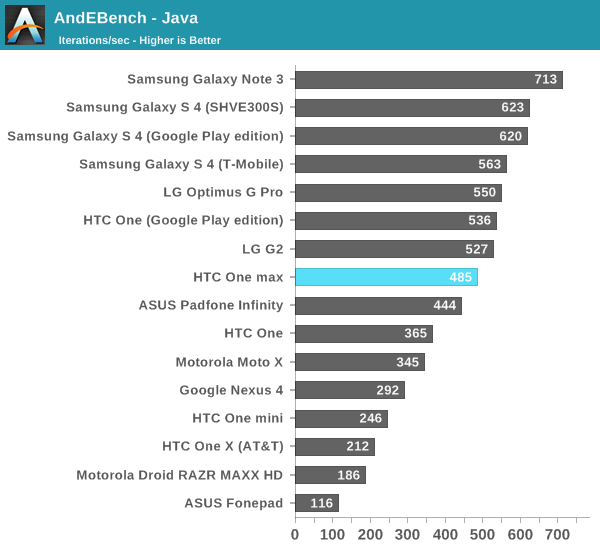
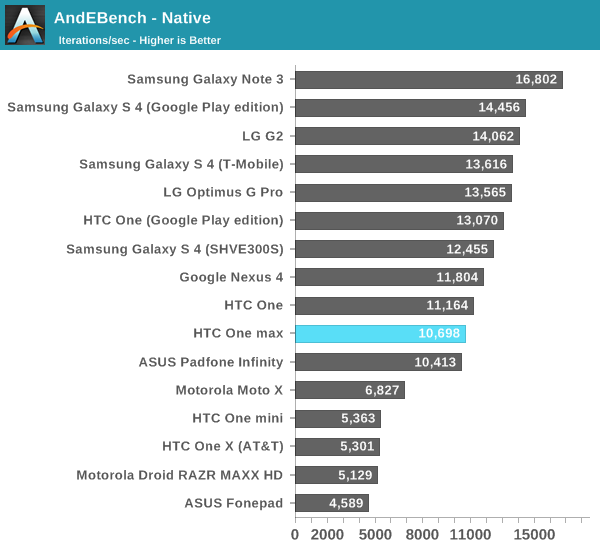
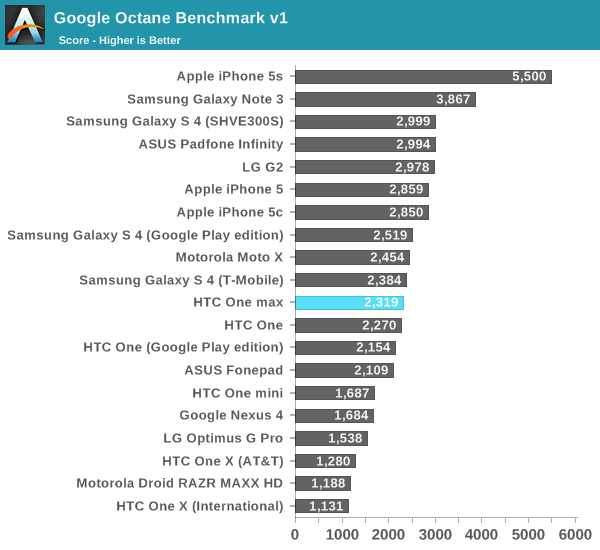
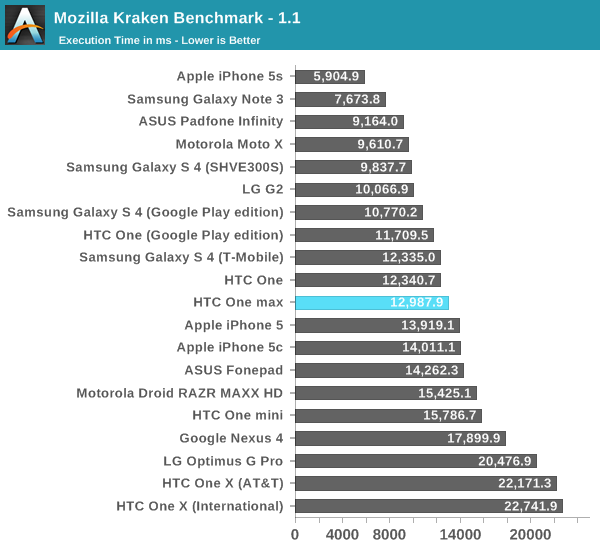
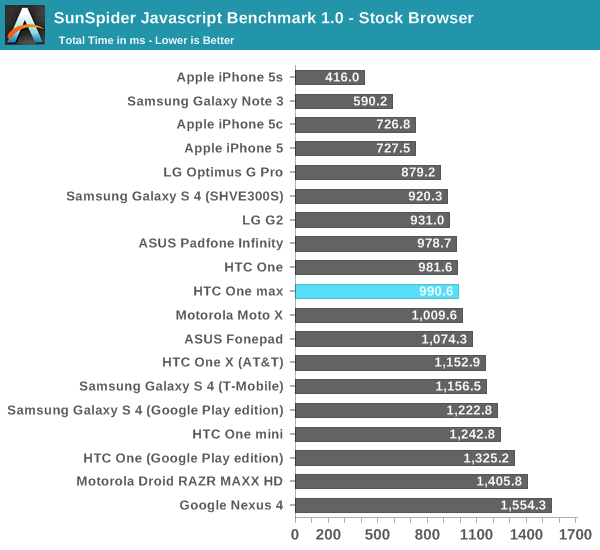
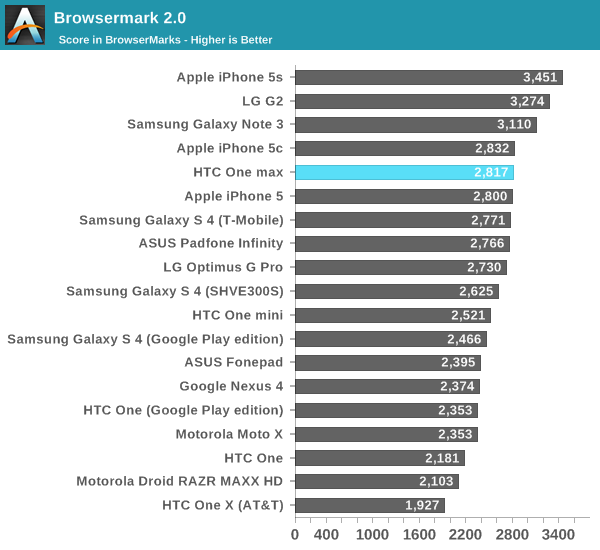
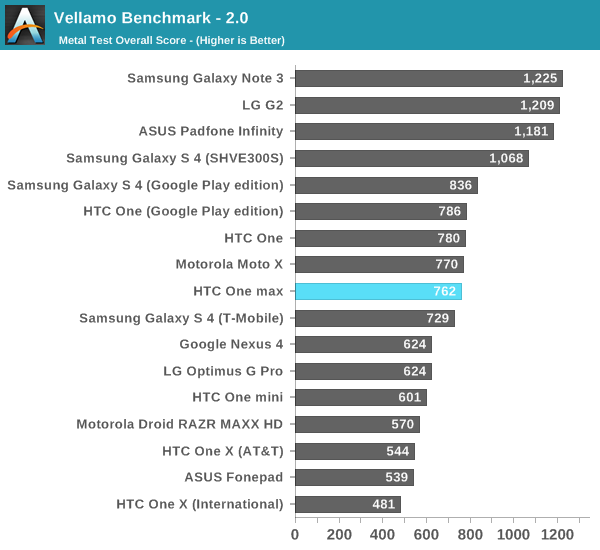
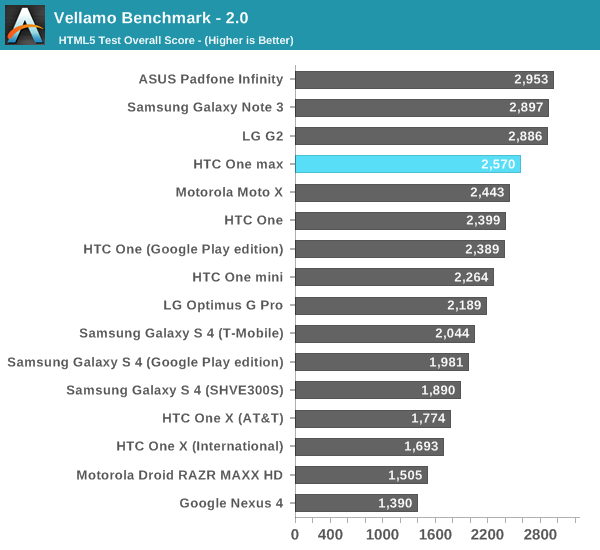
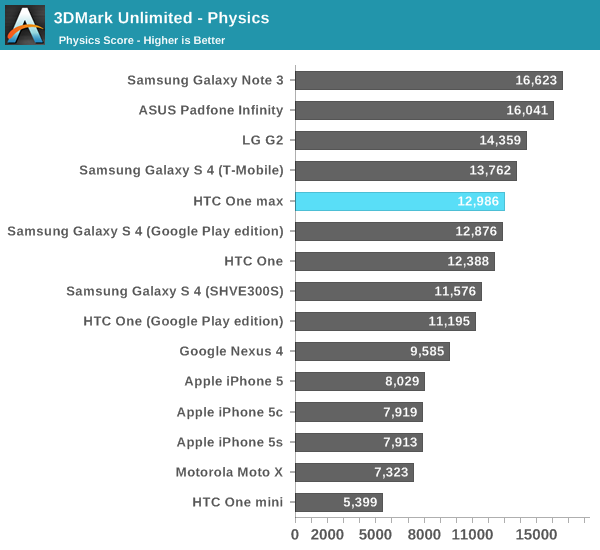
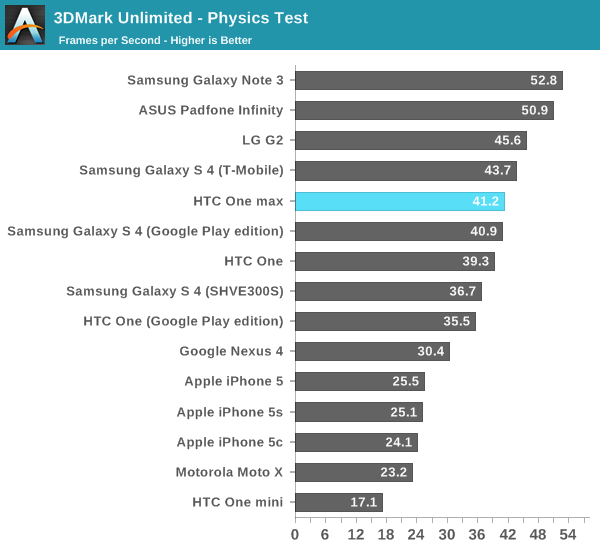
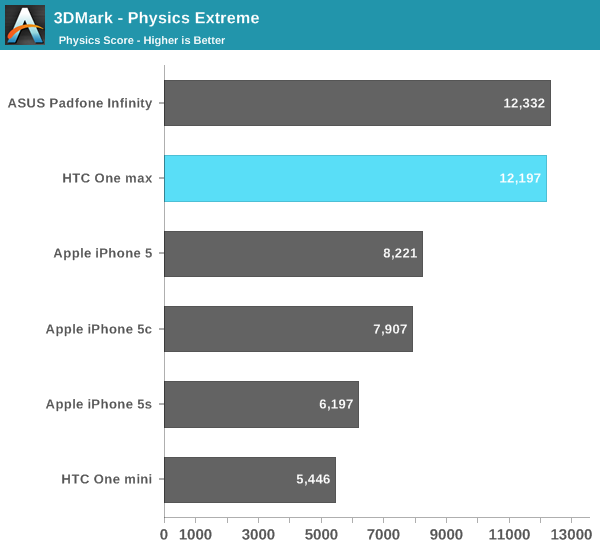
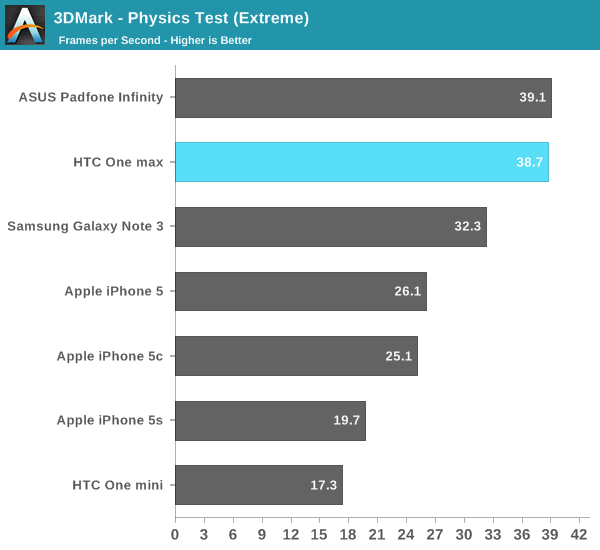
GPU
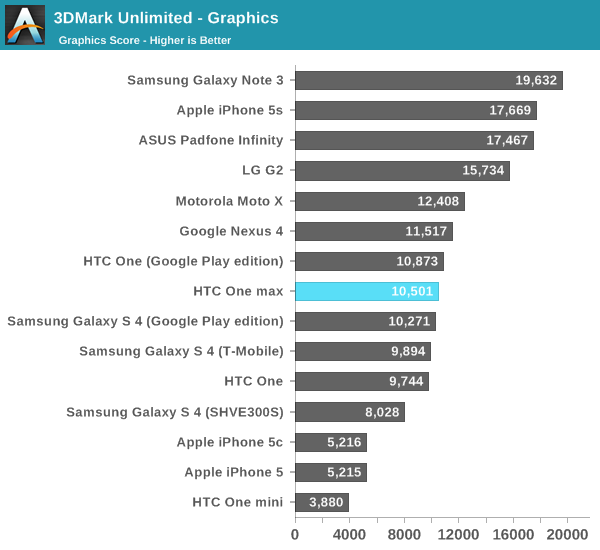
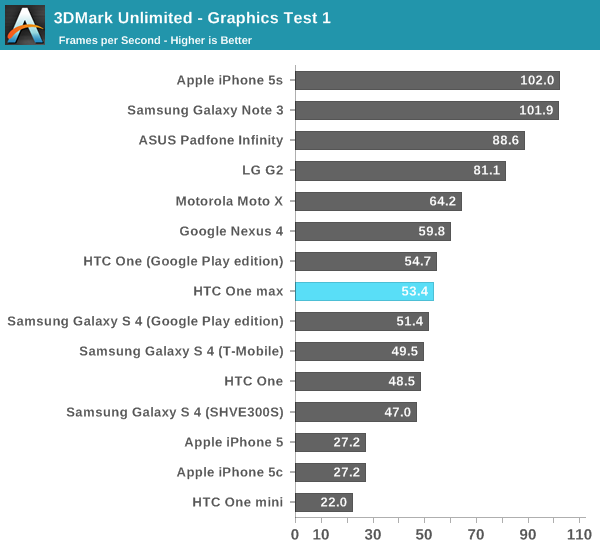
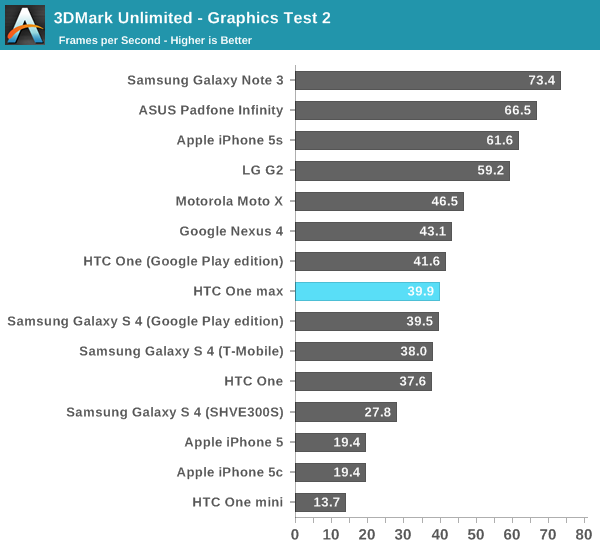
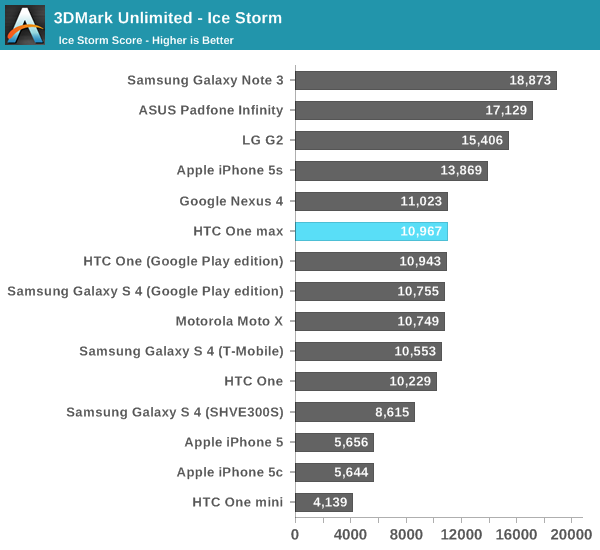
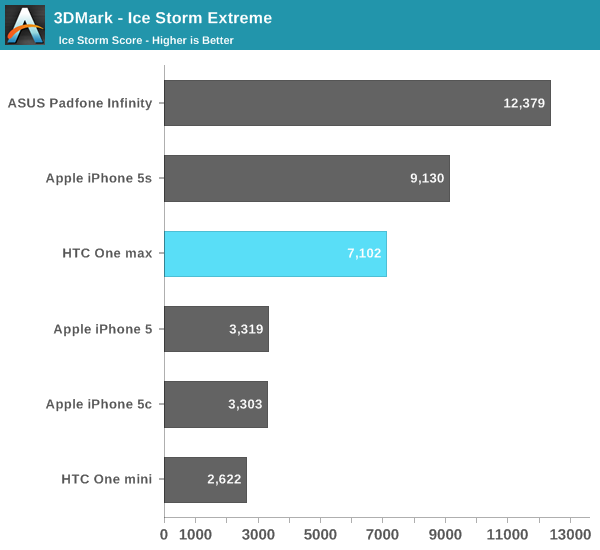
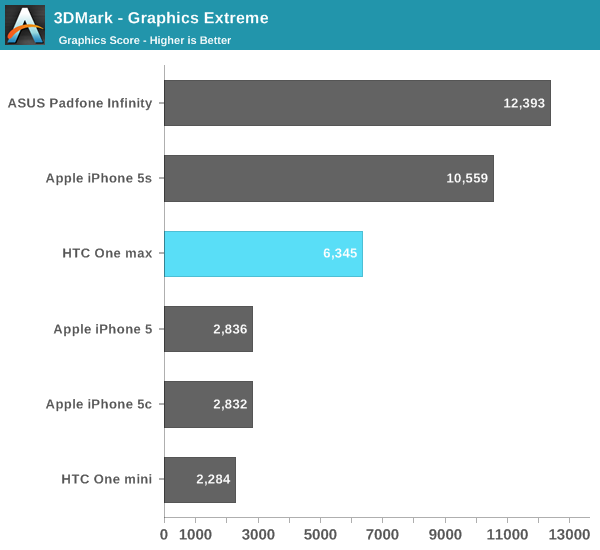
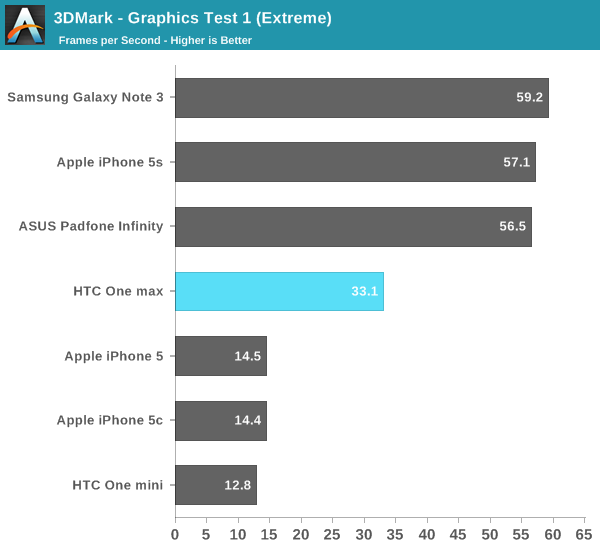
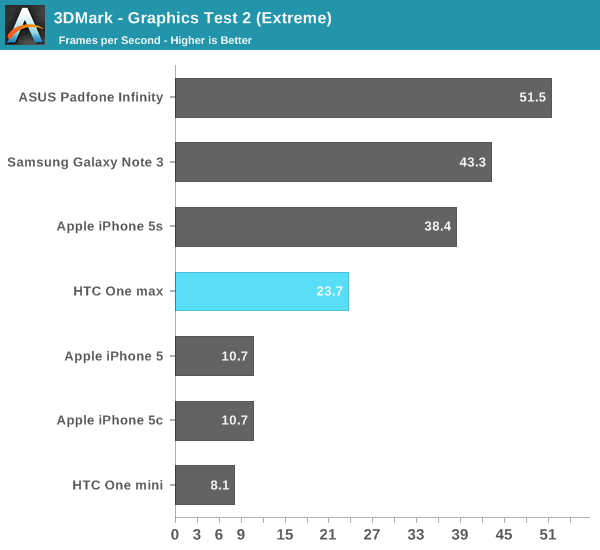
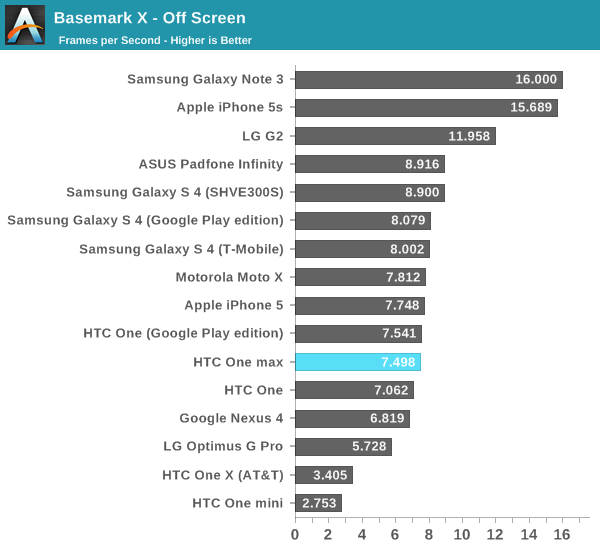
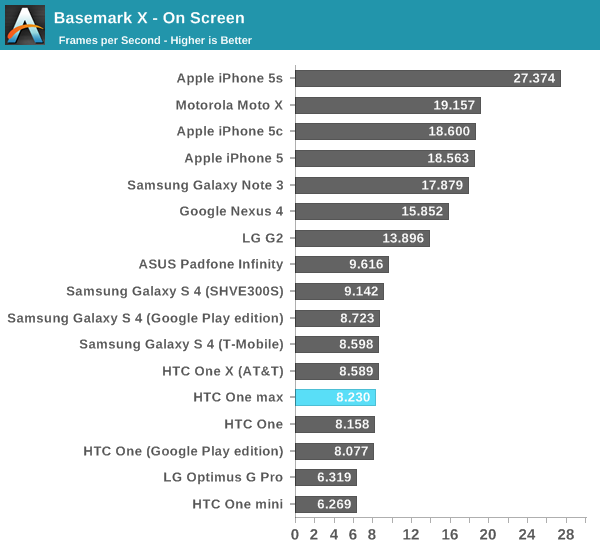
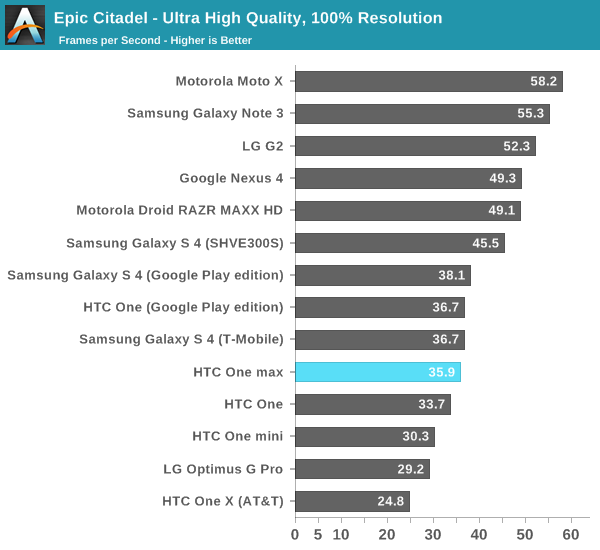
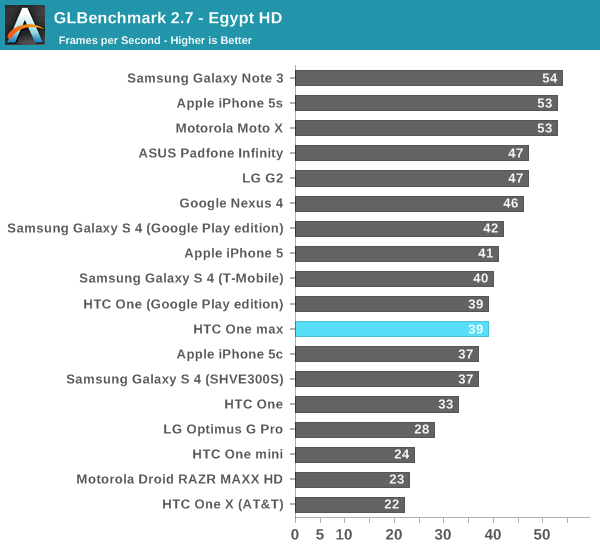
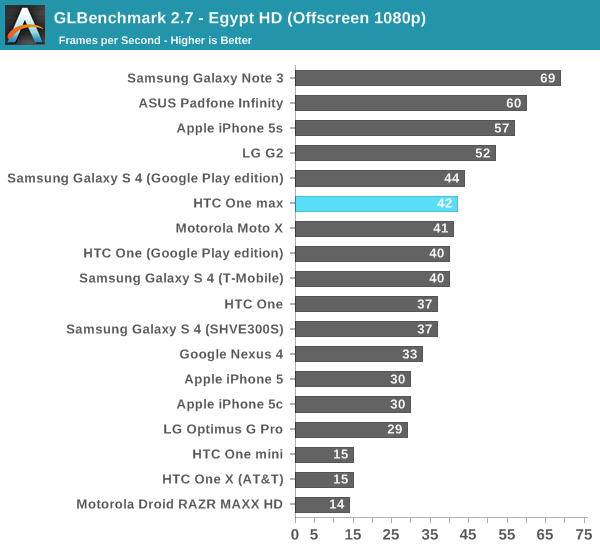
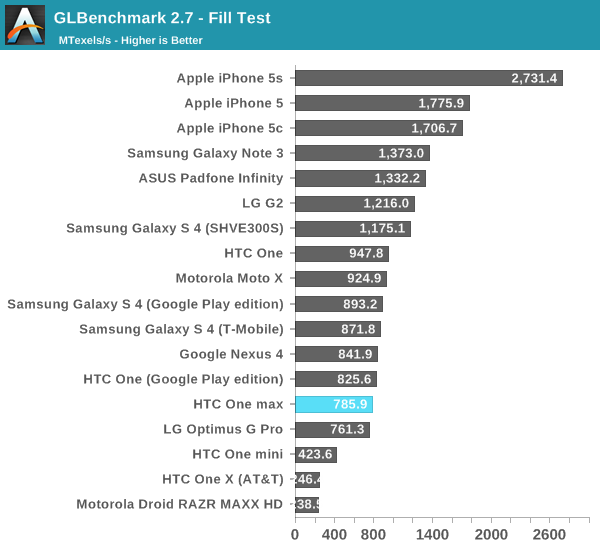

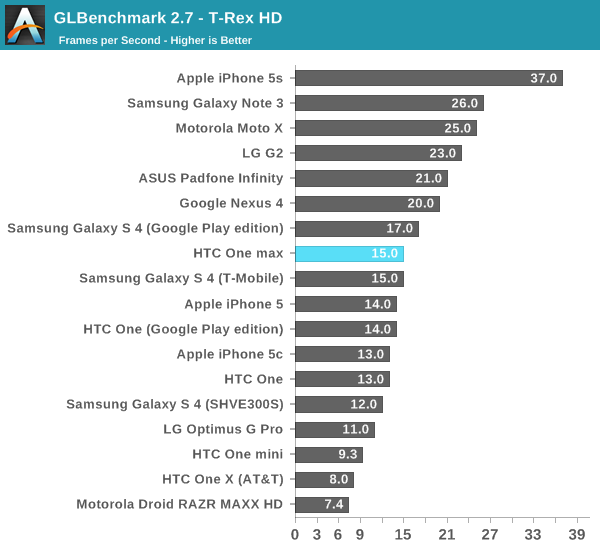
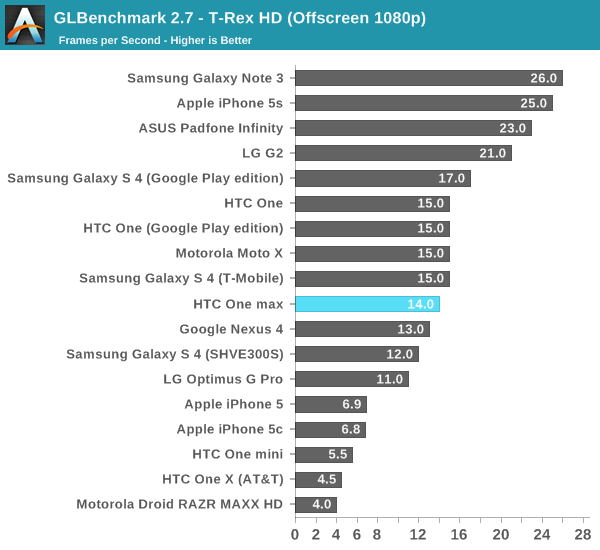
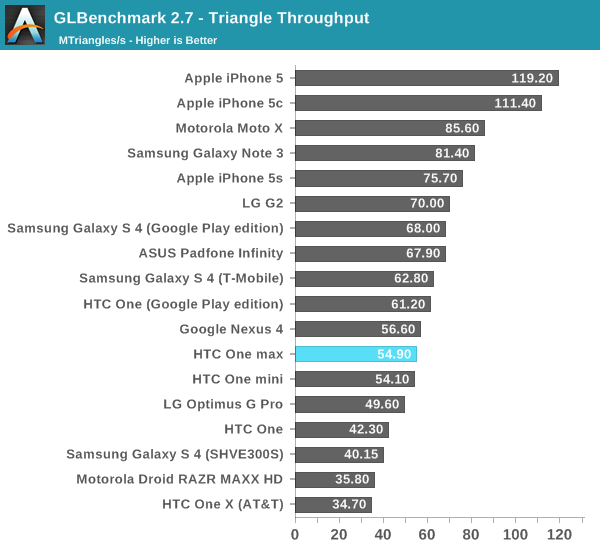
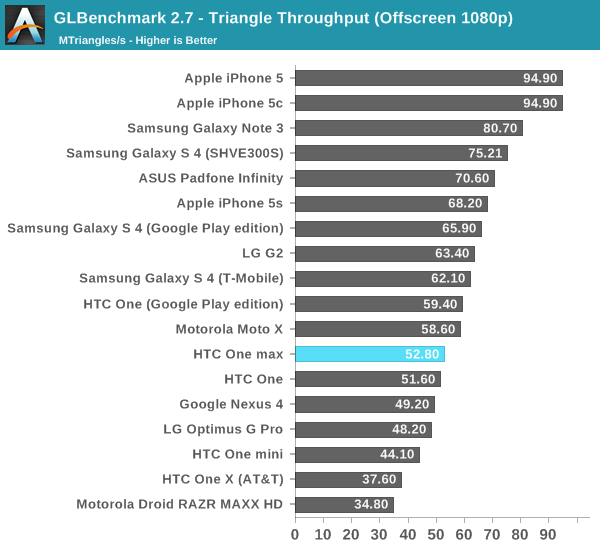
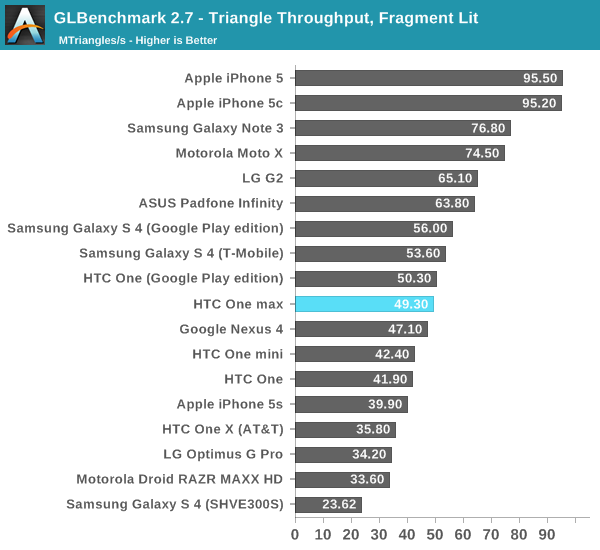
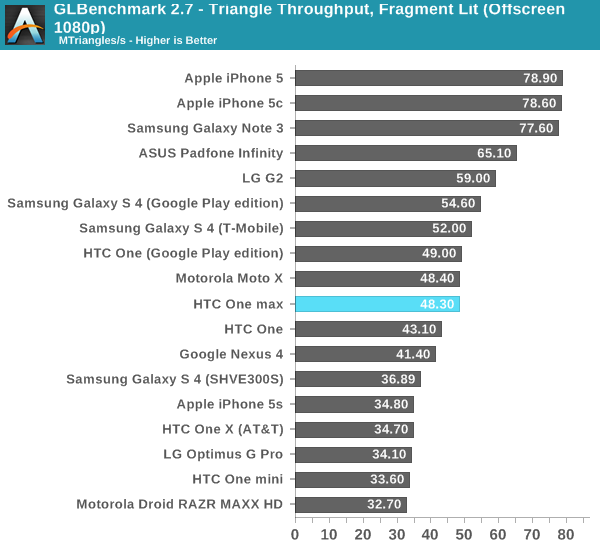
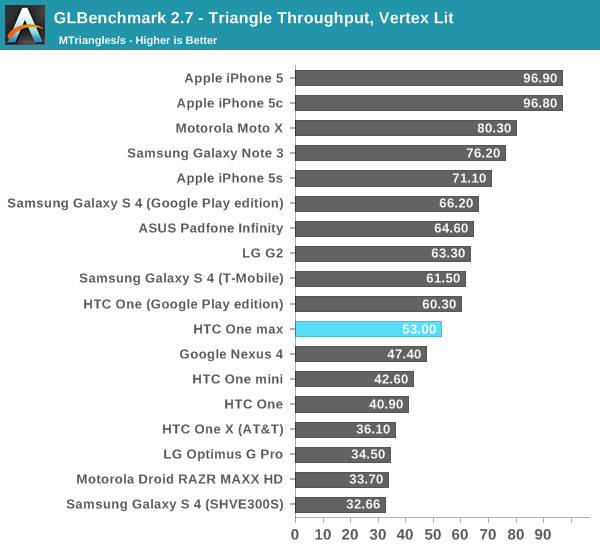
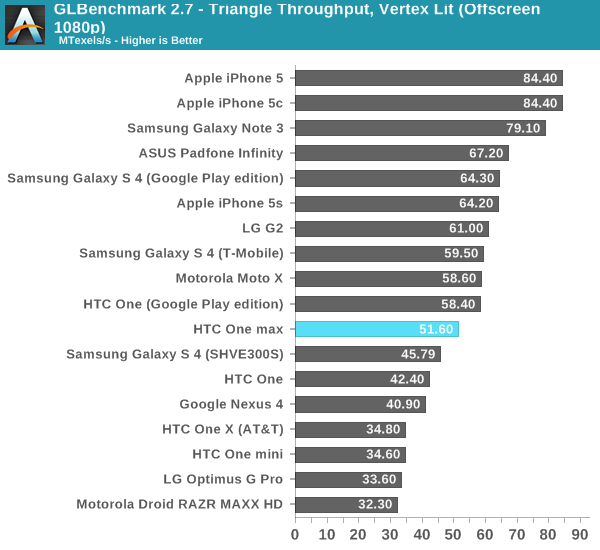
Storage
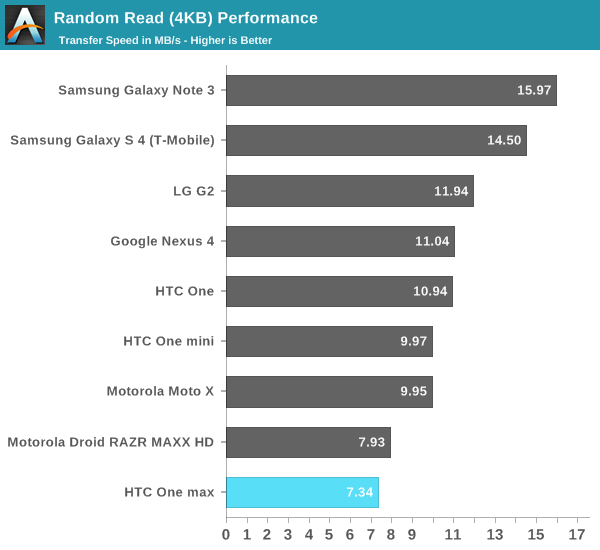
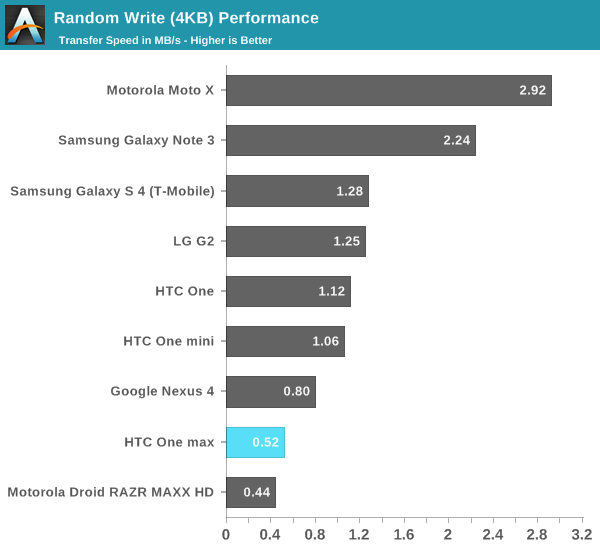
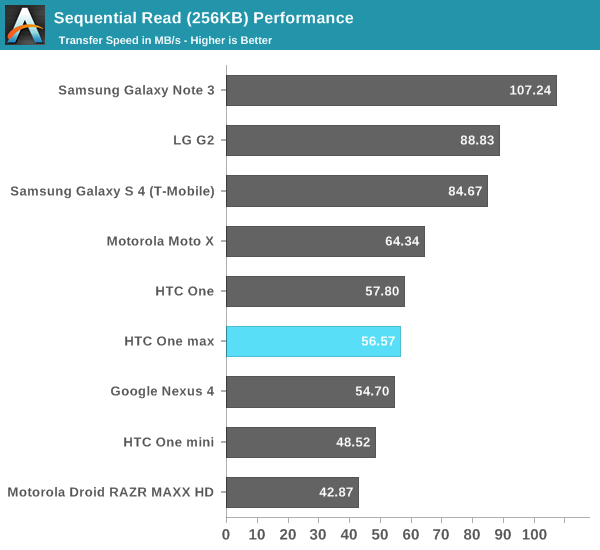
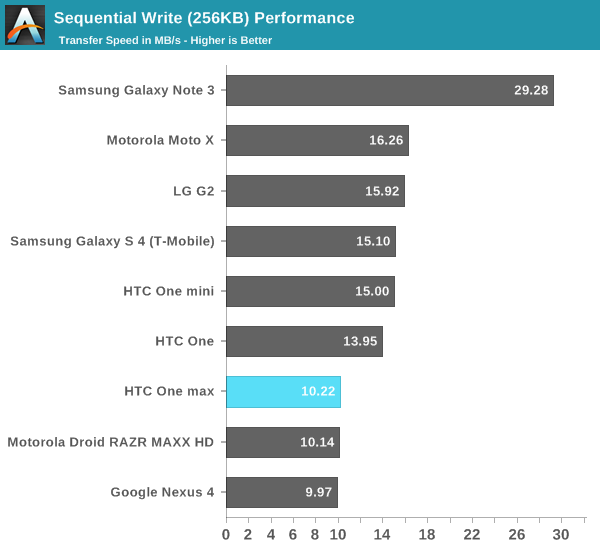
I’m not going to go through all the benchmark results on the One max since again it’s the 1.7 GHz Snapdragon 600 SoC we’re very familiar with at this point. The only oddity is storage performance, where the One max trails in random writes and reads, I'd attribute this to a different eMMC being used. The rest of the results are essentially within the margin of error. I initially suspected that the One max might have a bit more thermal headroom than the One, but this doesn't really seem to play itself out in the results, possibly due to the removable back door.


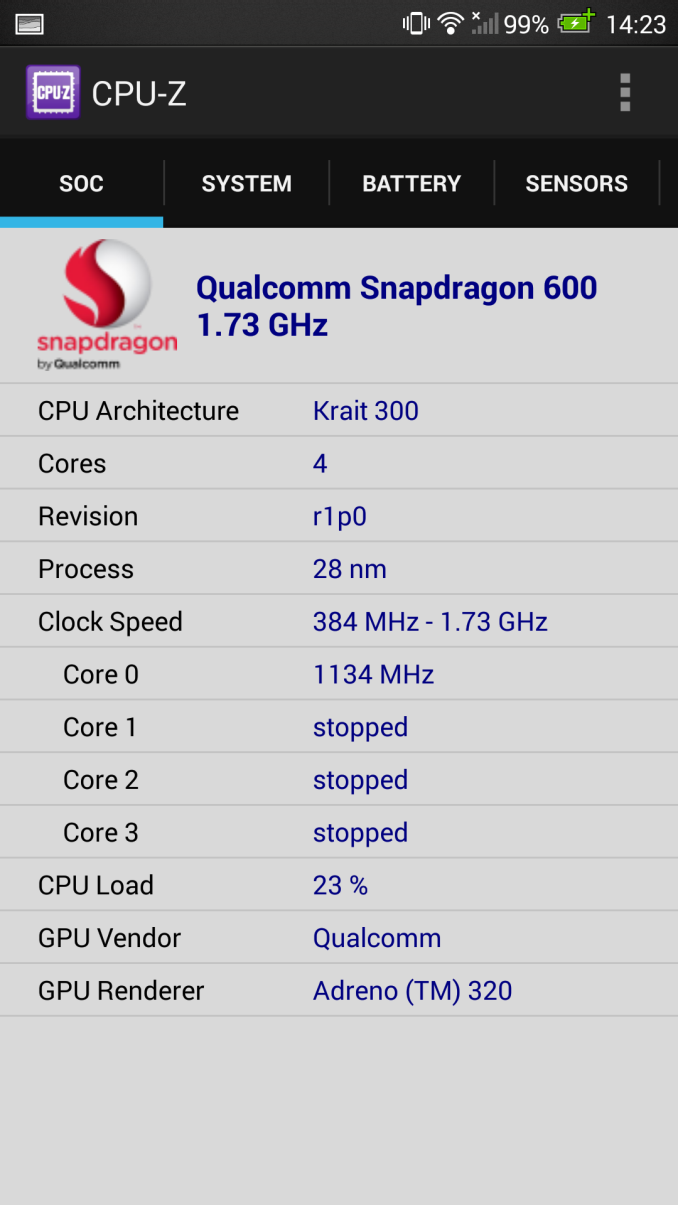
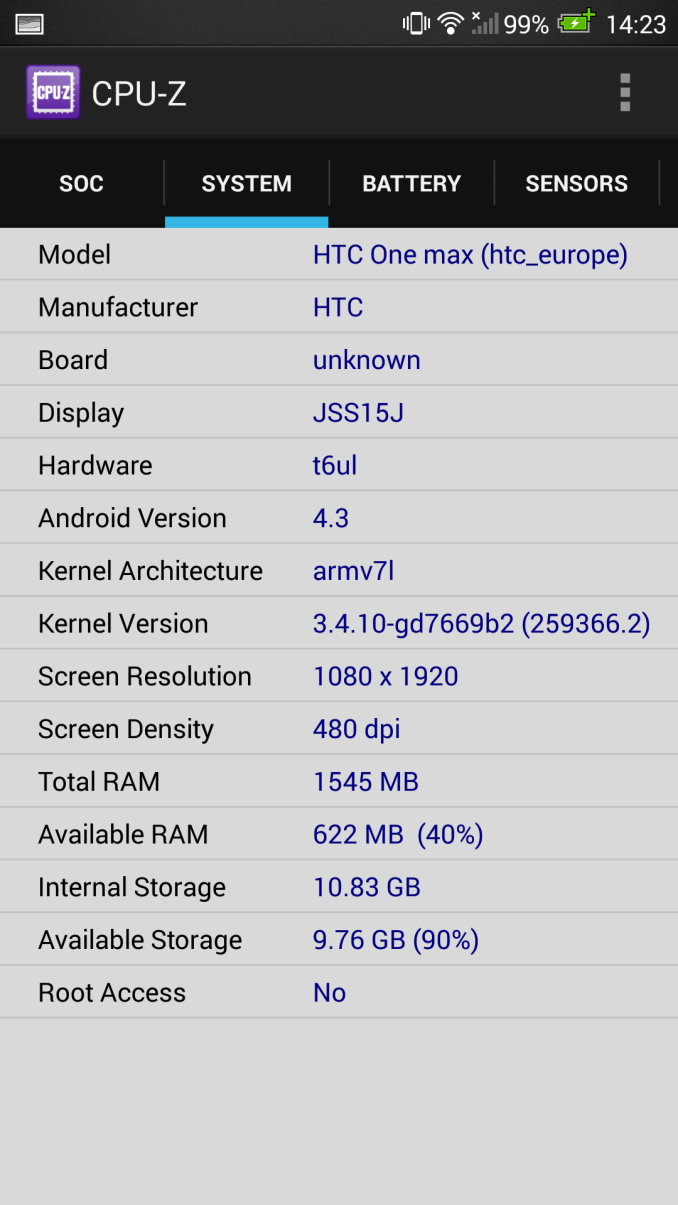








197 Comments
View All Comments
Dentons - Monday, October 28, 2013 - link
Brian, we know you hate SD cards and removable batteries. We also know that you are far more impressed by a phone that shows a bit of metal skin than by a phone that has actual features like removable batteries and microSD expansion.Your statement that "SD cards are going the way of the dodo" is laughably out of touch. Despite your personal wishes, the best selling smart phones on the planet, in nearly every size category, still have both microSD expansion and removable batteries.
You don't want these features, we get it. For whatever reason, you embrace the removal of these usable features. You clearly don't appreciate the convenience of being able to carry large volumes of media files at an economical price. Just as clearly, you don't mind having to search for chargers in every airport. Some of us aren't like you, many of us in fact.
It does seem odd that an in-depth technology site like Anandtech puts far more emphasis on the material making up the thin outer skin of a device, than the actual hardware features of that device. Each of Brian's reviews features a long discussion either lauding a metal skin or deriding a plastic one, while almost nothing on SD or batteries.
Is it too much to ask for a little less focus on your metal skin fetish and more focus on a device's actual features.
nerd1 - Monday, October 28, 2013 - link
Good point. Whenever you go to airport, you'll see lots of iPhones getting charged at power outlets. It's beyond me how people can expose their $$$$$ phone that way.Brian Klug - Monday, October 28, 2013 - link
I see lots of every kind of phone being charged at power outlets, and I'm in airports nearly every week :)-Brian
fenneberg - Monday, October 28, 2013 - link
keep dissing your base and you´ll be lost Mr. Klug.I am on my third battery and on a SD that holds all of western Europe Garmin quarterly up-dated maps and 45 GB of music on a Garmin-Asus A50 that I love cause it works and works.
steven75 - Thursday, October 31, 2013 - link
You are the fringe. AT will be just fine.Tegeril - Friday, November 1, 2013 - link
Don't let the door hit you on the way out?superflex - Tuesday, October 29, 2013 - link
Dont be silly Brian.Samsung phones never need to be recharged. Only sheeple and HTC One owners have to recharge.
Sheesh
ddriver - Monday, October 28, 2013 - link
It's because apple products don't have mSD slots ;) I bet the moment they start including those (by some miracle of nature I suppose :D ) the extra slot will be the best thing since sliced bread around AT :Dsherlockwing - Monday, October 28, 2013 - link
Apple won't accept mSD slots on phones, paying Microsoft license fee for every Iphone & Ipad sold due to their FAT 32 patent is too much for them.apertotes - Monday, October 28, 2013 - link
Completely agree. This Rivendel Aluminum praise is getting old. Phones are tools, not jewels or fashion statements.